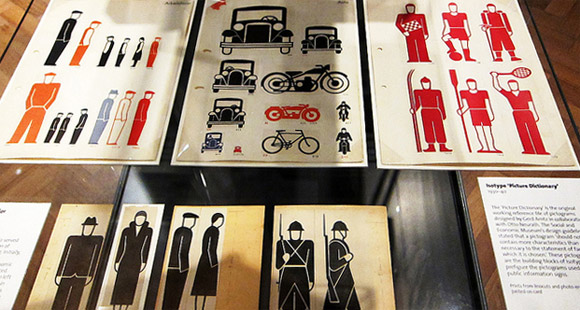
Rob Mientjes adds serifs to the typeface that everyone loves to hate, giving us Comic Serif, complete with swashy Q. Why not? This one is more in keeping with the original typeface than the version I mentioned a couple years ago.
I make things on the internet

Rob Mientjes adds serifs to the typeface that everyone loves to hate, giving us Comic Serif, complete with swashy Q. Why not? This one is more in keeping with the original typeface than the version I mentioned a couple years ago.

Ninjabread Men cookie cutters from Fred, available at Think Geek
Jon Bruner interviews Tim O’Reilly for Forbes Magazine. O’Reilly Media doesn’t put DRM on any of its books, he explains why:
People who don’t pay you generally wouldn’t have paid you anyway. We’re delighted when people who can’t afford our books don’t pay us for them, if they go out and do something useful with that information.
I think having faith in that basic logic of the market is important. Besides, DRM interferes with the user experience. It makes it much harder to have people adopt your product.
The lack of DRM is one of the reasons I purchase books from O’Reilly directly. It feels like you’re actually buying something — they’ll also give it to you in whatever format you want and will email when there’s an update. If you keep an eye on their twitter feed, they offer decent discounts.

If you missed the Isotype exhibit (more) at the V&A, no need to worry. Jasso posted a set of photos from out visit in December. You may also be interested in The Transformer by Marie Neurath and Robin Kinross.
Ward Shelley created a beautiful History of Science Fiction graphic. It may be turned into a poster.
“History of Science Fiction” is a graphic chronology that maps the literary genre from its nascent roots in mythology and fantastic stories to the somewhat calcified post-Star Wars space opera epics of today. The movement of years is from left to right, tracing the figure of a tentacled beast, derived from H.G. Wells’ War of the Worlds Martians.
Visit his site to see the image full-size (sample below).
Work by Atipo, a Spanish studio (via The Atlantic).
Chris Covell posted images and translations of Stars of Famicom Games, a children’s book showing how Nintendo games were made, from start to finish. The book focused on the making of Super Mario Bros. 3, and includes shots of Miyamoto, developers and artists. He also posted scans from a book about Dragon Quest VI.
Ben Goldacre for The Guardian on linking to the original source of material (via df).
Why don’t journalists link to primary sources? Whether it’s a press release, an academic journal article, a formal report or perhaps (if everyone’s feeling brave) the full transcript of an interview, the primary source contains more information for interested readers, it shows your working, and it allows people to check whether what you wrote was true. Perhaps linking to primary sources would just be too embarrassing.
This is one of those things that pisses me off to no end, especially with professional journalists. A couple months ago, I debunked that list of NASA bad science movies because it set off my bullshit radar. It was obvious that a list like that needed an original source if it was true. But that didn’t stop dozens of well-known news organizations from regurgitating the list without question. The web is fundamentally based on hypertext and interconnectedness, how hard is it to link to something?
Linking to sources is such an easy thing to do and the motivations for avoiding links are so dubious, I’ve detected myself using a new rule of thumb: if you don’t link to primary sources, I just don’t trust you.
That rule goes for everyone, not just journalists… give credit where credit is due. Users of Tumblr and Ffffound are particularly bad in terms of original sources. If I come across something I like on one of those sites, it usually takes considerable effort to discover who actually made it.
Of course, with all of the link sharing that goes on, we get another problem: sourcing sources, or indicating where you discovered your link. Justin Blanton was lamenting the lack of “via’s” today. It gave me a tinge of linker’s guilt, because I’ve borrowed his links on more than one occasion without credit. Vias are one of those things that I tend to be bad with — it’s often a result of having more than thirty tabs open and not remembering where they all originated. Sure, it’s not as important as linking to the original but a little link-love never hurts.

This series of videos from Is This A Good Time covers a variety of topics, including: creativity, social anthropology and formal semantics.

A long time ago, I used to play Magic: The Gathering, circa Fourth Edition, before giving it up in favour of the the Star Wars CCG (I was one of the popular kids in high school). I haven’t followed the game in years, but the Big Furry Monster came through my Tumblr dashboard earlier today and made me grin. The makers of the game released a couple of fun expansions that weren’t tournament legal: Unglued and Unhinged. Shuffle & Cut has images of all the cards if you’re interested.
Leonhard Euler was a Swiss mathematician and physicist. All of his work is available online in the Euler Archive from Dartmouth. The collection includes the original papers, translations, correspondence and modern research using Euler’s work.
Update: The archive now resides with the Mathematical Association of America and has changed address (reflected above).
Barry Michaels helps screenwriters get over writer’s block.
By far the most common problem afflicting the writers in Michels’s practice is procrastination, which he understands in terms of Jung’s Father archetype. “They procrastinate because they have no external authority figure demanding that they write,†he says. “Often I explain to the patient that there is an authority figure he’s answerable to, but it’s not human. It’s Time itself that’s passing inexorably. That’s why they call it Father Time. Every time you procrastinate or waste time, you’re defying this authority figure.†Procrastination, he says, is a “spurious form of immortality,†the ego’s way of claiming that it has all the time in the world; writing, by extension, is a kind of death.